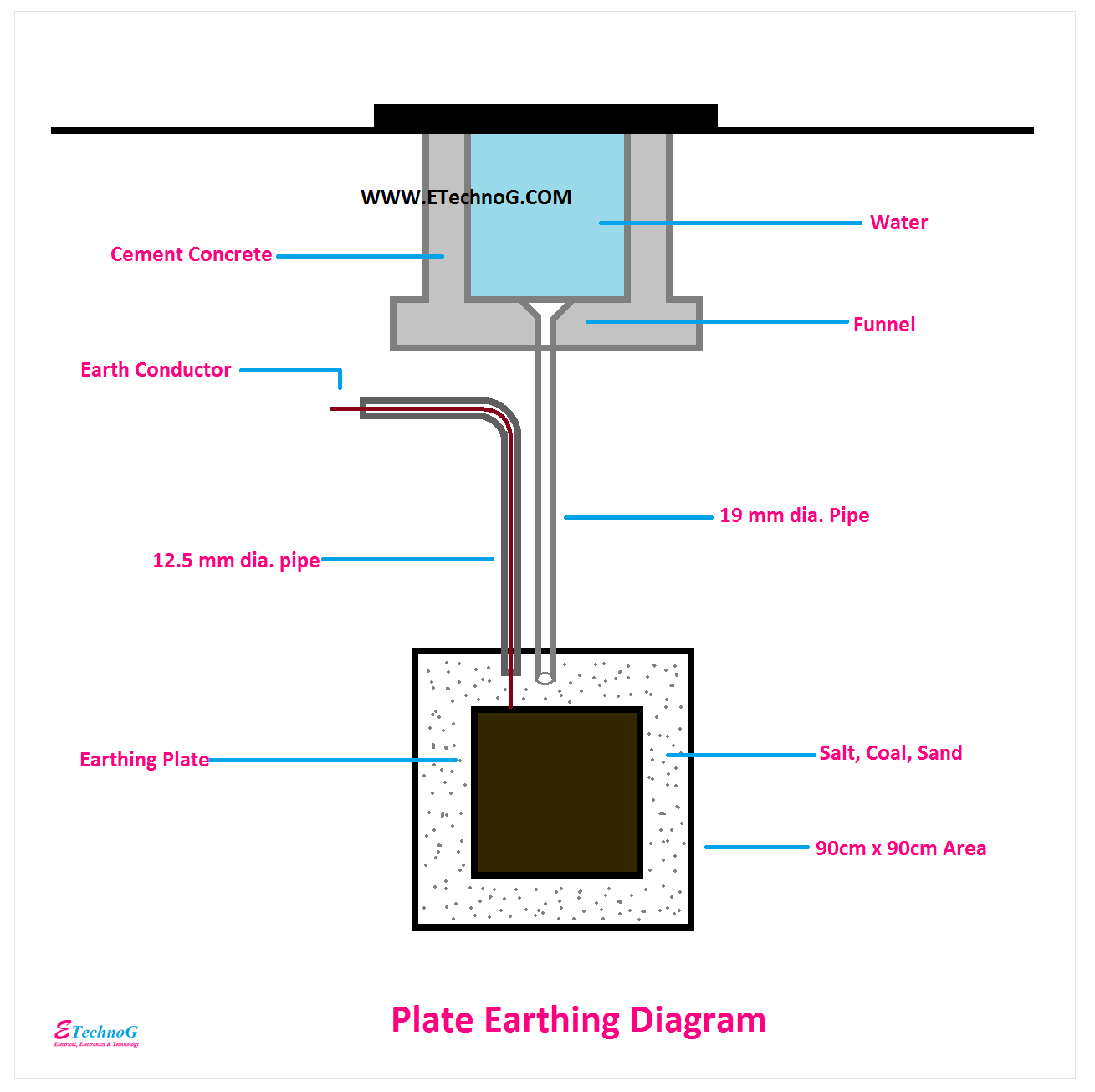What is Plate Earthing? Diagram, Applications, Procedure
Earthing is a very important safety arrangement for electrical equipment, device, circuits, etc. Earthing helps to bypass the leakage current to the ground. Electrical earthing protect from electrical shock. Generally, electrical earthing or grounding is an arrangement to connect the metallic body of the electrical equipment or machine, or panel to the earth or ground. There are different types of electrical earthing are available - Plate Earthing is one of them. Plate Earthing is very efficient earthing system than a rod earthing system.
What is Plate Earthing?
The earthing system, where a copper or galvanized iron plate is used to connect all the earthing conductors to the earth is called Plate Earthing. Generally, the plate is placed vertically at a depth not less than three meters or 10 feet from the ground level. And all the conductors are connected to the plate. Plate earthing have complex installation than rod earthing even it is most costlier also.
Plate Earthing Diagram
Here, You can see the diagram of plate earthing.
In the above diagram, you can see there is two pipes are connected to the plate. One is to lay the conductors and another is for watering which is connected to the funnel. The funnel is connected at the top end of the 19 mm pipe. This funnel will help to put the water into the earthing.
Plate Earthing Procedure
1. The size or dimension of the plate used in plate earthing is 60cm(H) x 60cm(W) x 3.18mm(D) for copper plate and 60cm(H) x 60cm(W) x 6.35mm(D) for the galvanized iron plate.
2. Place the earthing plate vertically at a depth of below 3 meter from the ground level.
3. Use a 12.5 mm diameter pipe to lay the earthing conductors through it.
4. Use a 19 mm diameter pipe to connect the funnel and earthing plate. Connect the earthing conductor to the plate and brought out above the ground.
5. Put the Coal, Sand, and salt around the earthing plate. After that fill the top with black soil.
6. At last put the water to the earthing to increase the conductivity. Don't forget to put water regularly especially in the summer time.
7. Must check the conductivity and resistivity of the earthing system regularly and take necessary action when required.
Purpose of Using Salt and Coal in the Earthing
The salt soaks the alkali of the ground and the Coal makes the soil to hold the moisture. So, using these Salt and Coal helps to increase the overall conductivity of the earthing system. When the conductivity increases, the leakage current easily flows to the ground. It increases the efficiency of the overall earthing system.
Use and Applications of Plate Earthing
Plate Earthing is used in power stations, transmission lines, large electrical panels, high voltage transformers, where the amount of earth fault current is very high. Also, the plate earthing helps to connect more number of ground wires or earth wires from different loads. A rod earthing can be connected to a single earth wire but we can connect multiple earth wire to the plate earthing.
Plate Earthing Advantages
The main advantage of plate earthing is, it can carry a very high current than rod earthing. Also, it provides a very good conductivity between earthing conductors and the ground.
Plate Earthing Disadvantages
The main disadvantage of plate earthing is the high installation cost. It is very costly to install a plate earthing system than plate earthing. Also, it is more complicated than the rod earthing.
Read Also:

